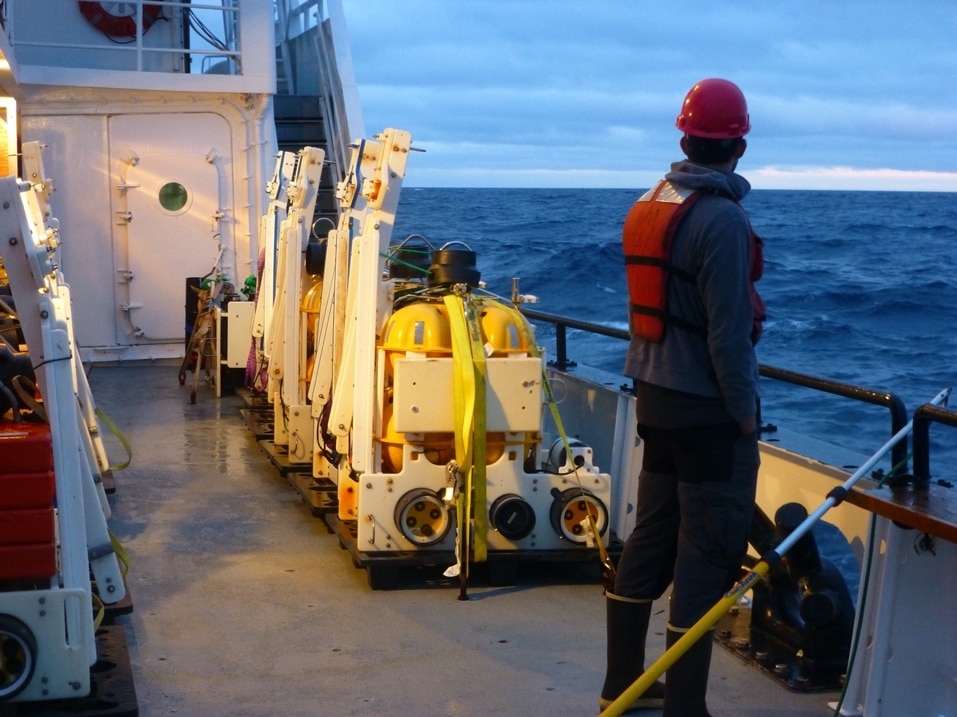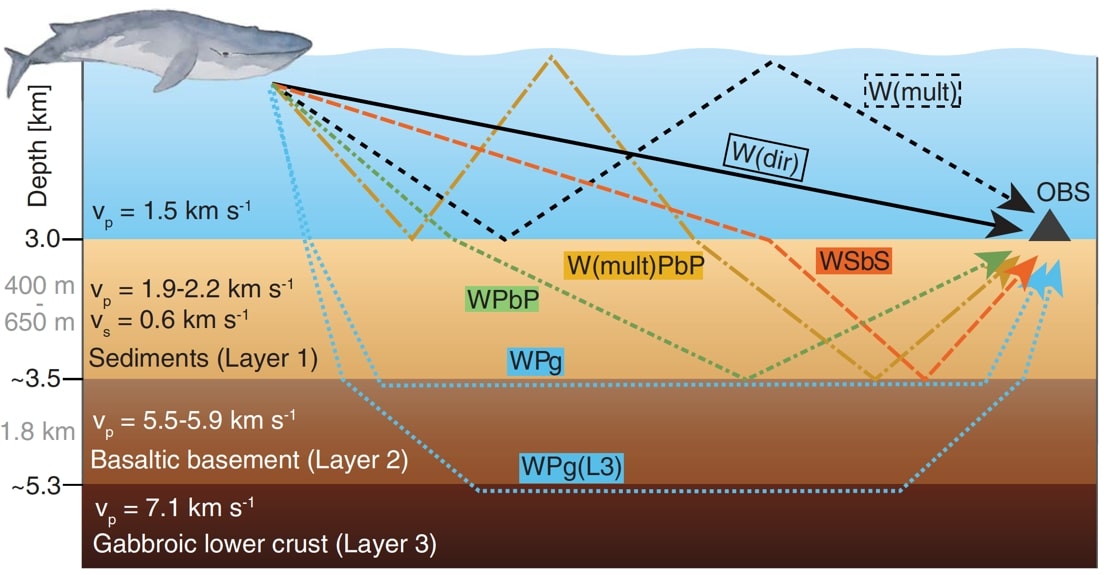The songs of fin whales can be used for seismic imaging of the oceanic crust, providing scientists a novel alternative to conventional surveying, a new study published this week in Science shows.
The study’s lead author is Vaclav Kuna, who worked on the project as a doctoral student at Oregon State University and now is a post-doctoral fellow as at the Institute of Geophysics of the Czech Academy of Sciences. The co-author, John Nabelek, is a professor at Oregon State University’s College of Earth, Ocean, and Atmospheric Sciences.
Ocean bottom seismic station deployment in northeast Pacific
Kuna and Nabelek were studying earthquakes from a network of 54 ocean-bottom seismometers placed along the Blanco transform fault, which at its closest is about 100 miles off Cape Blanco on the Oregon Coast. They noted strong signals on the seismometers that correlated with whales’ presence in the area. “After each whale call, if you look closely at the seismometer data, there is a response from the Earth,” Nabelek said.
Whale calls were traditionally used to track whales and study whale behavior. However, the new study shows that fin whale songs contain signals that are reflected and refracted within the Earth’s crust, including the sediment and the solid rock layers beneath. These signals, recorded on seismometers on the ocean bottom, can be used to determine the thickness of the layers as well as other information relevant to seismic research. Researchers can use information from these layers to learn to improve the quality of earthquake location.
Model of the upper oceanic crust, with seismic velocities and ray paths. The model depth is not to scale.
The traditional method for imaging the structure of the crust is expensive and permits can be difficult to obtain because the work involves blasting of high-energy airguns. The imaging created using the whale songs is less invasive, although overall it is of lower resolution and cannot completely replace the standard methods. Future research could include using machine learning to automate the process of identifying whale songs and developing images of their surroundings.
“This method expands the use of data that is already being collected,” Nabelek said. “It also shows that animal vocalizations are useful not just for understanding the animals, but also understanding their environment. The paper serves as a proof of concept that could provide new avenues for using data from whale calls in research. What we discovered is that whale calls may serve as a complement to traditional passive seismic research methods.”
By Vaclav Kuna
Source: John Nabelek, Michelle Klampe, Oregon State University news



